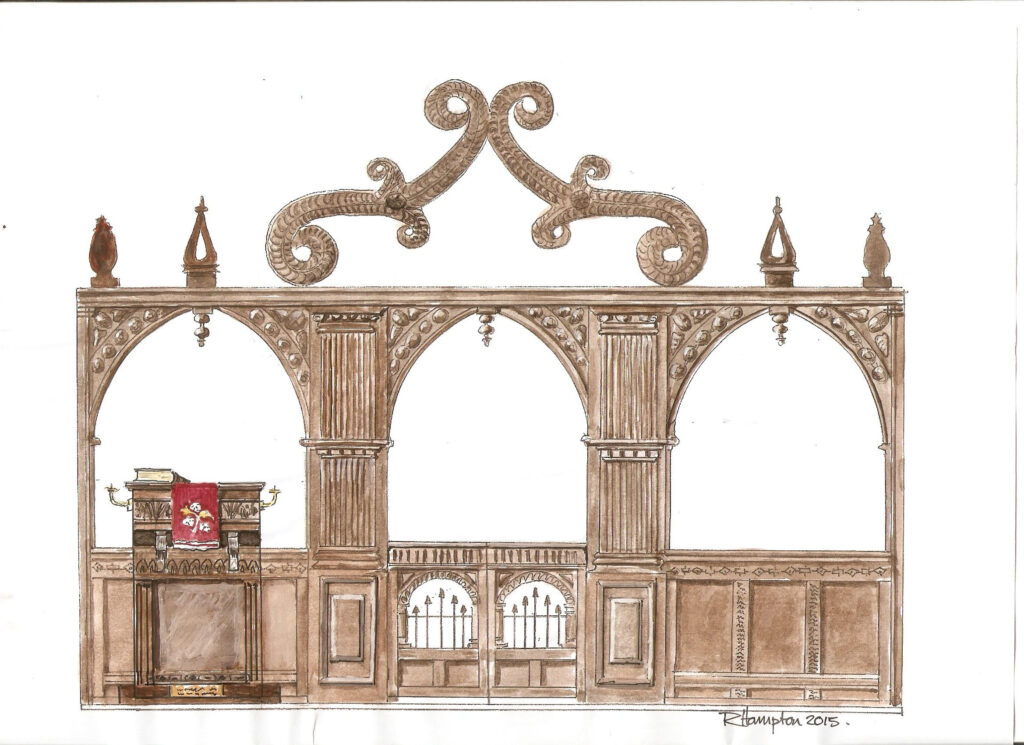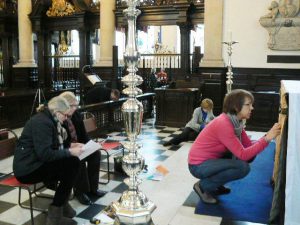Religious buildings are full of so many items, each with its own history and detail; how do we even start to record them all? Click on a heading below to see the detail.
Who are recorders
First we should explain that all recorders are volunteers. Many start with no experience or detailed knowledge but learn with experience and training. There are groups of recorders all over the UK, many sponsored by a local The Arts Society. Whilst independent, they share their knowledge and experience with other groups in the area. They call on the advice of CRS advisers and external specialists..
How do you set about recording a building?
Whilst in some groups, everyone works together, going through the categories one by one, in most the recorders specialise, one or two for each category to be studied, such as memorials, metalwork, woodwork, stonework, textiles and windows. All the objects within a category are listed and the recorders and work through their lists, recording the details of each item. They work with a photographer to provide images that show the important characteristics of each item.
So much detail …
PHOTOGRAPHS AND DRAWINGS MAKE THINGS CLEARER








What does a completed record look like?
Records are computer written and compiled. They are delivered as bound books and in digital form, depending upon the recipient.


Where do they go and can I see one?
Records go to national libraries, national church authorities, the V&A Art Library, local church authorities and the church recorded. Access to them depends upon the sensitivities of the church. In principle, people with a legitimate interest should have access. To achieve this, access is controlled. An Index of names and features is to be available on this website. Churches are able to use their Records for promotion, education, grant applications, insurance and similar purposes. They have been very useful in cases of fire, damage and loss.
A Record is a permanent archive of the church’s artefacts at the time of recording, which is to be available for 100s of years.


